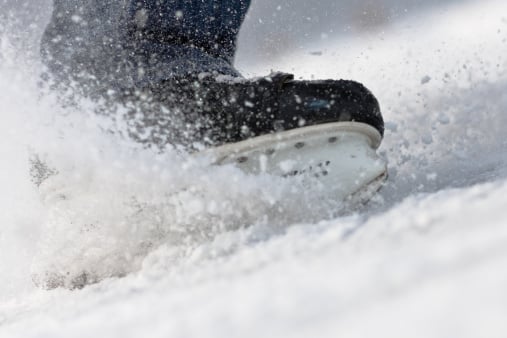How We Use Moxy for Sport-Specific Assessments and Training
What if you could tell how long an athlete could skate full-out, fully recover, and do it again?
How many shifts? How many do you need – because the equipment you used to assess is the same used to guide your training. Welcome to the world of Moxy, where we do sport-specific assessments and training based on science.
This is the story of how, upon the shoulders of brilliant thinkers, scientists, physiologists, strength trainers, and coaches we – Juerg & Andri Feldmann and Brian Kozak, plus a small group of exercise physiologists, coaches and medical professionals – are able to assess the ideas/theories/research of the above mentioned brilliant thinkers and see “live what works.”
A New Understanding of Oxygen’s Use
For example, in school we were taught how energy is used by the body, where oxygen is the last energy source used, and by the time it is used the athlete has slowed down. Now we see “live” that Oxygen is used from the beginning, which provides us with the ability to design efficient training programs based on our findings. It also raises many questions related to the theory of how energy is used. This was the main reason why the group gathered recently for the 1st European Moxy/NIRS seminar in Switzerland.
On-Ice Assessment
How do we apply this new knowledge? A junior hockey player receives a summer training program from his team and wants to be tested (we use the term “assess”), and given some guidance when following the team’s training program. We assess on-ice to see his “Hockey Physiological Picture”—which means how long can he last skating full out for 30 seconds, how long it takes him to recover, and the number of times he can repeat (the science behind these numbers provides us with a plethora of information, but more on that in a later blog).
Now we have a picture of where the hockey player’s fitness is “today,” and when we re-assess, what has changed. This is a key point, as the goal of training is to make you a better hockey player, so let’s monitor this and see.
Training in the Gym
In the gym we assess Lower & Upper body (of course using the Moxy) to provide us with a Performance & Recovery Base for the major lifts. We take ten minutes for each assessment, so we are at 40 minutes in total, and with some additional biomarkers we are ready to provide guidance using the team’s training plan. Before we proceed, we always highly recommend that if you have access to a certified trainer (especially in your chosen sport), you employ their knowledge and experience: we are there to support their great work with science.
Monitoring Recovery Time
We are now ready to begin the training with a simple change to how we monitor the recovery of the athlete. During training, the athlete, and if possible their personal fitness trainer, monitor the recovery time. For example, the program might have 8-10 reps for 4 sets with a 1-minute rest. Moxy will show “live” how long it takes the muscle(s) to recover for each set. Here is a possible scenario for recovery time based in seconds: 35, 39, 42, and 52. With this one example we see the time saved, and we are now basing the recovery on the athlete’s physiology.
The ability to monitor and adjust recovery works for all types of training, i.e. strength or sprints, and not only on dry land but on the ice also. Monitoring the recovery time every training session shows “trends” from day to day and between the same exercises. One simple goal would be to decrease recovery time for the same exercises. Another is to have the athlete learn the “recovered feeling” based on feedback from the Moxy Sensor.
The bonus is that Moxy does not only show recovery between sets, but recovery between workouts! Is the athlete recovered from the previous day’s workout? How many days to recover from each workout? Moxy provides very useful information to improve the athlete’s ability to maximize hockey fitness with hockey skill.
In my next blog, I’ll explain how the hockey athlete warms up with the Moxy to “fill his energy tank.”
Some key points:
- The athlete is rested/recovered for each assessment.
- Assessing body symmetry is of utmost importance, as is correcting it.
- Additional assessment equipment (i.e. Spirometer, Fitmate, etc.) can be used to provide more biomarkers if time permits (keeping in mind that more does not mean better; the equipment must be easy to use and sport related).
- There is more science behind the description above.
How many shifts per game will you train for? The most efficient route to that number is through Moxy! It’s time to add science to your skill.


